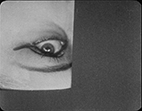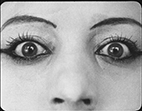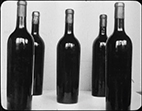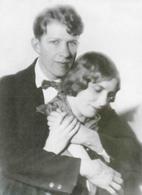Ballet Mechanique - #2 - SD restored 2001, 2005 - Fernand Léger, Dudley Murphy
- Unseen Cinema Collection |
- 1923-1924 |
- 17 minutes |
- COLOR/B&W |
- SOUND
Rental Format(s): Digital File
Alternate title: Ballet mécanique, Images Mobile
Co-makers: Fernand Léger, Dudley Murphy
Asssited by Ezra Pound, Man Ray, Charles Delecommune
Photography: Dudley Murphy, Man Ray, Ezra Pound
Production assistance: Étienne Lallier, Otto G. Karlson
Original format: 35mm silent film 1.33:1 various projection speeds
Restoration 2001, 2015 standard defintion Digibeta videotape from 35mm by Bruce Posner at Image Entertainment, DuArt Film & Video, and Brett Hampton in collboration with Anthology Film Archives and Film Preservation Associates.
Featuring Kiki (Alice Prin), Katherine Hawley Murphy, Dudley Murphy, and Fernand Léger.
Original music 1925 by George Antheil "Ballet pour instruments mécaniques et percussions," adapted and arranged 2001, 2015 by Paul D. Lehrman.
Courtesy: Frederick and Lillian Kiesler, G. Schirmer, Inc., Estate of George Antheil, Charles Amirkhanian, Paul D. Lehrman, and Bruce Posner
Techncial note: 35mm B&W frames telecined with interpolated 35mm color frames per Filmmuseum Münchner Stadtmuseum restored version based on Filmliga vintage 35mm nitrate print at EYE Filmmuseum, Amsterdam.
It is known that the "Ballet mécanique", a silent film made by visual artists Fernand Léger and filmmaker Dudley Murphy, was designed to be synchronized to music by avant-garde maverick Geroge Antheil. Various claims announced by Léger and Antheil at the time of artistic production and preceding the film#s initial release document the imaginative collaboration. But Antheil's music did not accompany the first public screening of the film in Vienna on September 24, 1924 and not later at screenings held in Germany during May 1925 as part of groundbreaking series "Der Absolute film."
Antheil had not completed the music in time for the premieres nor had he composed the music in collaboration with the editing of the film. Also, the assisting technicians been not able to realize a mechanical method for the music to be performed as Antheil envisioned or had they been able to link together in perfect synchronization the music with the film.
Eventually the creators could not agree upon a satisfactory arrangement, and the projects separated. Each unfulfilled to the other. Nonetheless, the trajectory of the discrete creative projects would continue to be entwined during the decades that follow.
The film accompanied by player piano music "Ballet mécanique" were performed together in America at presentations held on November 20, 1931 at The Arts Club of Chicago and November 24, 1931 at the Renaissance Society, University of Chicago, and again on October 18, 1935 at the Museum of Modern Art in New York. On all occasions, Léger was in attendance to lecture on cinema. Antheil's piano rolls were also presented together with the film at arts events organized by Julien Levy in New York City during December 1931 and January 1932, with the first program held at his father's apartment was titled "Music and Film." It is known that at these early screening events Antheil appeared only once to accompany the film and that was at Léger's MoMA 1935 lecture.
Also, between 1932 and 1934 using a 35mm print, Antheil worked on a new sound edition of "Ballet mécanique" to feature "talking and singing", and that Léger informed Antheil that both Murphy and Kiesler held 35mm prints of the film in the United States. The new sound version never materialized. -Mauro Picccininni and Bruce Posner
The music is scored for eight percussionists, two pianists, bells, siren, airplane propellers, and sixteen player pianos. It eschews conventional forms, instead creating a unique "soundscape." Due to technical limitations related to synchronization, this complex composition was never played in its original instrumentation, alone or with the film. -Paul D. Lehrman
A pioneer of cubism and abstract art, Fernand Léger (1881-1955) emerged from the First World War enamored of the socalled machine aesthetic wherein the visual spectacle of modern life was the essential subject for modern painting. He also wrote about cinema, and in Ballet mécanique, used rapid editing and the close-up to find visual drama and formal beauty in machine parts and functional objects. -Matthew Affron
Boston-born Dudley Murphy (1897-1968) was an engineering student, World War I pilot, and movie set decorator before launching his directing career with a series of evocative short films including the first American avant-garde film to be screened in New York City, The Song of the Cypress (1921). These musically driven experiments culminated in the jazz-infused Ballet Mecanique, and influenced his later Hollywood and independent features, including The Emperor Jones (1933). -Susan Delson
American composer-performer George Antheil (1901-1959) went to Europe from New Jersey in 1922. His outrageous piano concerts featuring his avant-garde compositions made him "the toast of Paris." However, a failed New York performance of Ballet mécanique in 1927 ruined his reputation. After 1935, he emerged as a respected composer for Hollywood films. -Paul D. Lehrman








